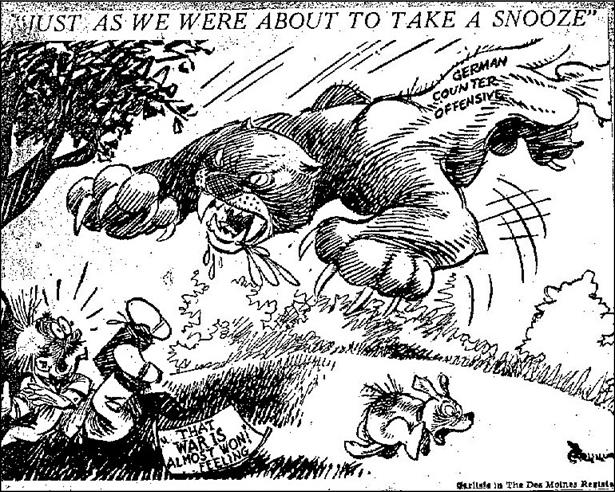by 27 December, when the trapped units of 2nd Panzer Division made two break-out attempts with only partial success, the battle continued for another month before the front line was effectively restored to its position prior to the attack. In the wake of the defeat, many experienced German units were left severely depleted of men and equipment, as survivors retreated to the defenses of the Siegfried Line.
Outcome
The US 99th Infantry Division, outnumbered five to one, inflicted casualties in the ratio of 18 to one. The division lost about 20% of its effective strength, including 465 killed and 2,524 evacuated due to wounds, injuries, fatigue, or trench foot. German losses were much higher. In the northern sector opposite the 99th, this included more than 4,000 deaths and the destruction of 60 tanks and big guns. Historian John S.D. Eisenhower wrote, “...the action of the 2nd and 99th Divisions on the northern shoulder could be considered the most decisive of the Ardennes campaign.”
The stiff American defense prevented the Germans from reaching the vast array of supplies near the Belgian cities of Liège and Spa and the road network west of the Elsenborn Ridge leading to the Meuse River. After more than 10 days of intense battle, they pushed the Americans out of the villages, but were unable to dislodge them from the ridge, where elements of the V Corps of the First U.S. Army prevented the German forces from reaching the road network to their west.
Winston Churchill, addressing the House of Commons following the Battle of the Bulge said, “This is undoubtedly the greatest American battle of the war and will, I believe, be regarded as an ever-famous American victory.”
The battle has been depicted in numerous works of art, entertainment, and media, including:
Films, e.g.,
Battleground (1949),
Attack (1956),
Battle of the Bulge (1965), and
A Midnight Clear (1992)
Games:
Over 70 board wargames have been created about the battle, the earliest in 1965. As of 2014, the battle has been the scene for about 30 video games, mostly strategy games, beginning with Tigers in the Snow (1981).
Literature: In Kurt Vonnegut’s postmodern novel Slaughterhouse-Five, or The Children’s Crusade: A Duty-Dance with Death (1969), the protagonist Billy Pilgrim is captured by the advancing German army during the Battle of the Bulge.
Television: The battle was the subject of the PBS American Experience episode, “The Battle of the Bulge”. The battle was prominently featured in two episodes of the miniseries Band of Brothers (2001). Additionally, the Military/American Heroes TV series Greatest Tank Battles featured an episode on the Battle of the Bulge as “The Battle of the Bulge: S.S. Panzers Attack!”. The battle was featured in the “Veteran’s Day” episode of the animated series Hey Arnold!, where Grandpa Phil tells a story of how he opened a gap in the German lines when they captured him and became sick from the tainted meat rations he was transporting.
